“These two models offer well-considered features, and cut a fresh figure in a crowded field”: ToneLounge's Shoreline TVL and 2TV models smoothly blend the old and the new
The latest creations from veteran luthier Brian Swerdfeger play brilliantly, and feature an intriguing trick or two up their sleeves
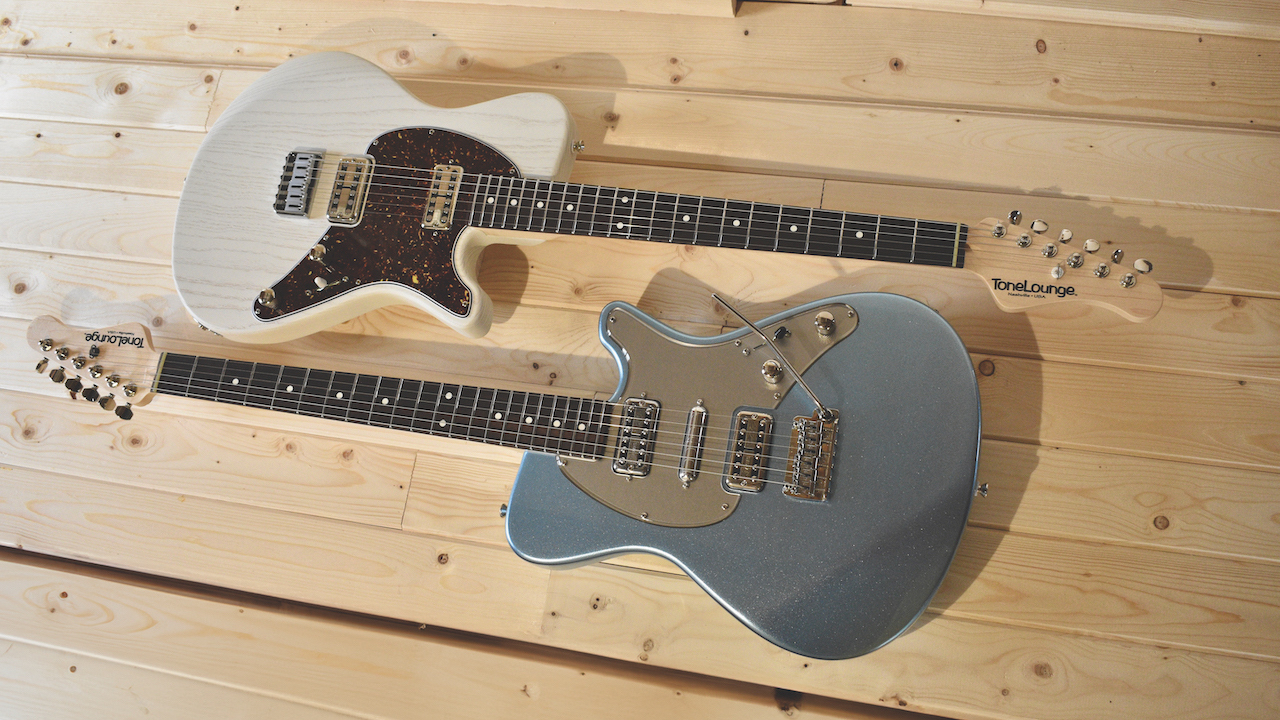
When you consider all the shapes and configurations of electric guitars that have hit the market since Leo Fender introduced the first mass-production solidbody 74 years ago, it seems quite a feat when a maker launches a new design that looks original, yet somehow fits right in. ToneLounge Guitars has managed to do just that with a fresh range of guitars from Brian Swerdfeger, a designer with a long history in the business.
Swerdfeger has spent decades in the deep end of the guitar pool, working for Taylor Guitars and most recently as head of R&D for Fender. He’s seen the industry from myriad perspectives, and the experience has primed him well to design and build his own instruments.
Given his résumé, we might be tempted to look for a little of all the above in the ToneLounge Shoreline TVL and Shoreline 2TV guitars seen here, and no doubt we’ll find elements that draw both direct and indirect connections. And yet, the two Shoreline models cut a fresh figure in a crowded field, while they offer well-considered features.
The Shoreline’s body shape and 25 ½–inch scale seem Telecaster-inspired, but there’s a certain forward thrust to the profile, coupled with a slightly offset waist, a truncated horn, and a reshaped upper bout that helps to make them undeniably different. It all seems to be an artful blending of old and new.
“That’s a perfect description of what I set out to design and build,” Swerdfeger replies. “It’s very difficult, if not impossible, to make a new shape that is not referencing or tipping the hat to the classic designs that came before us. With the Shoreline, I wanted to honor my SoCal heritage and at the same time take us to new places. It’s designed to inspire players and their music, and it’s my hope that these guitars provide fresh identities and performance experiences you can call your own. ‘Modern classic’ sounds boastful and trite, but that’s it in a nutshell.”
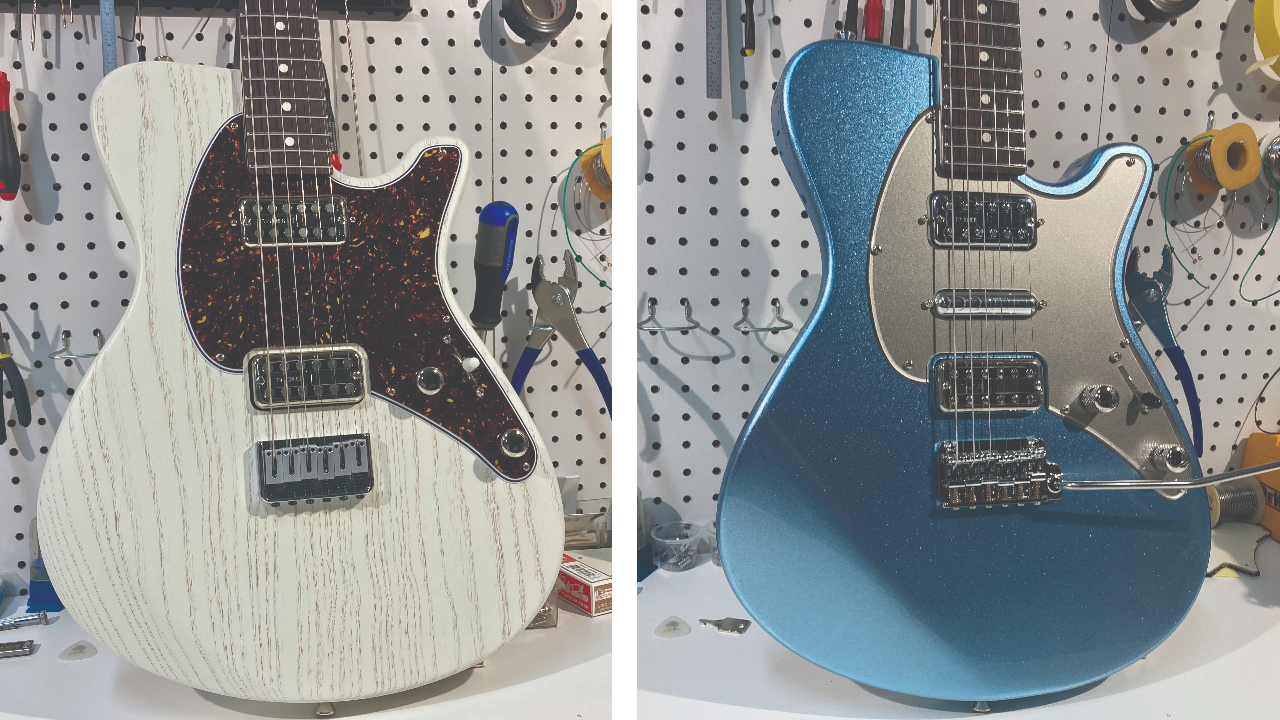
Replying to further thoughts on that score, Swerdfeger adds, “My neck design is a great example of modern features with a vintage soul. It has a compound radius, stainless frets set in a pocketed fretboard – that is, with blind fret ends – rolled and aged fretboard edges, an oil-infused bone nut, and a string tree that are all thoroughly modern. Yet the flat-sawn maple neck back, classic slab rosewood fretboard, and single-acting truss rod are vintage through and through. And I prefer the tone and resonance of a classic woodscrew bolt-on neck, too.”
The superb feel of these necks in the hand reinforces the effort entirely. They seem familiar, certainly, but also speak of a very conscious perfecting of the many little details that come together to make a difference.
All the latest guitar news, interviews, lessons, reviews, deals and more, direct to your inbox!
Fret work is immaculate, fingerboard edges are invitingly radiused, and ToneLounge’s so-called comfortable modern-C neck profile and compound 10-to-14–inch fingerboard radius sit easily in the hand. Playing comfort is further enhanced by generous body contours at the ribcage and forearm positions, resulting in less “Tele scarring” than a certain other classic can induce, while the body side of the neck joint is also sculpted for easier upper-fret access.
The guitars are built in Nashville by ToneLounge’s two-man team, which includes Swerdfeger and David Graef, an acclaimed tech who has worked with Don Felder, Rascal Flatts, Mark Knopfler, Peter Frampton, Foo Fighters, and others. The spec sheets accompanying each of the review models credit Swerdfeger as master builder and Graef with performing the wiring and final setup. Indeed, the playability is immediately impressive and makes me feel at home with each guitar before I even have a chance to think about it.
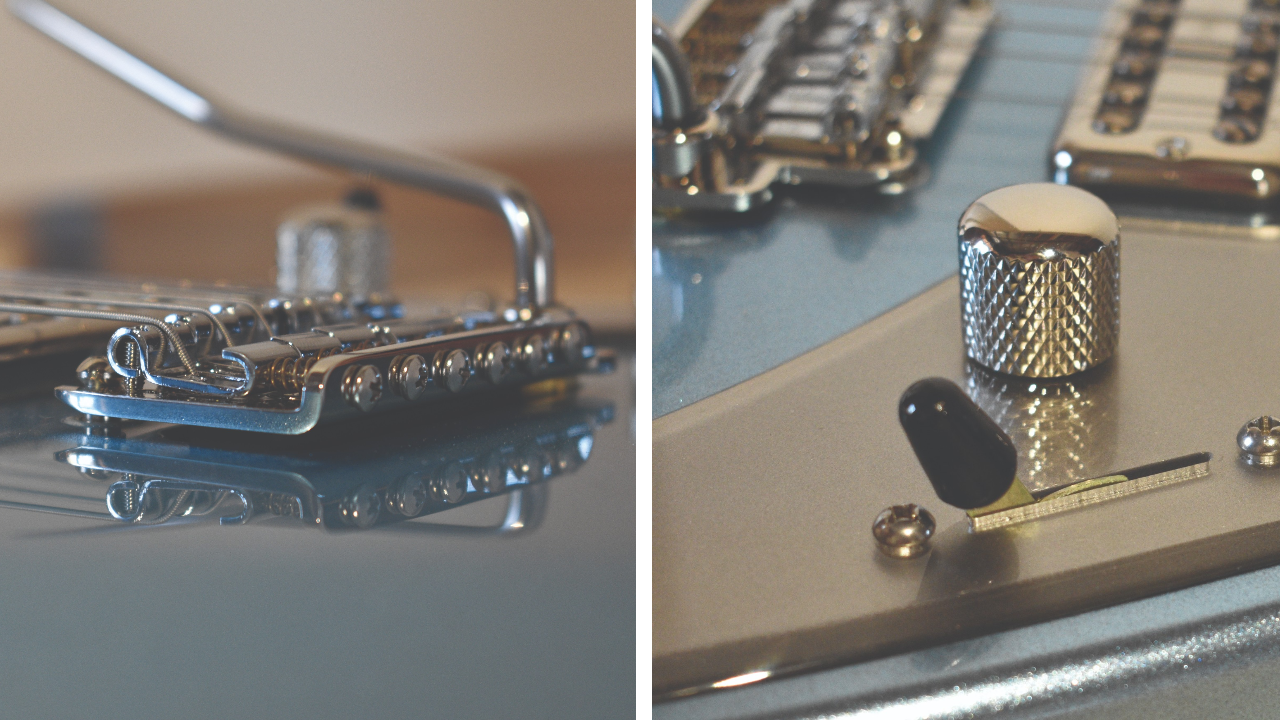
Swerdfeger notes that finishing is done out of house, and the results are equally notable. Each guitar displays some variety, too. The alder-bodied TVL boasts a mirror-like gloss atop its Ice Blue Metallic finish, while the 2TV’s swamp-ash body – though also shot in nitrocellulose lacquer – displays a white, open-pore satin that allows a more tactile feel of the grain.
Alongside the Gotoh hardware, which comprises a hardtail bridge on the 2TV and a two-post vibrato on the TVL, these Shoreline models display a distinct fondness for TV Jones pickups. The former has a pair of the maker’s Zoom’Tron pickups, built to the general Filter’Tron formula but with alnico magnet poles, while the latter sports a TV Jones Classic in the neck, a Classic+ in the bridge, and a lipstick tube between them to offer S-inspired in-between settings.
Although they do follow the latter-day La Cabronita craze, with the Gretsch-style pickups applied to otherwise bolt-neck, single-cutaway guitars, the choice takes the Shorelines further away from the F-inspired template to induce originality in the tone of each.
“[TV Jones founder] Tom Jones has been a friend for many, many years, and I love how he’s expanded and evolved the classic Filter’Tron design,” Swerdfeger tells me. “I love ’Trons and his variations because, when used in a new guitar design, like mine, they sound amazing and deliver tones that the classic guitars don’t offer.
“Musically, TV Jones pickups fit really well in a mix and band setting, both clean and dirty, without taking up too much sonic space. This allows my guitars to play well with others. I also love that he is a small, family business like ours and his pickups are 100 percent made in America.”
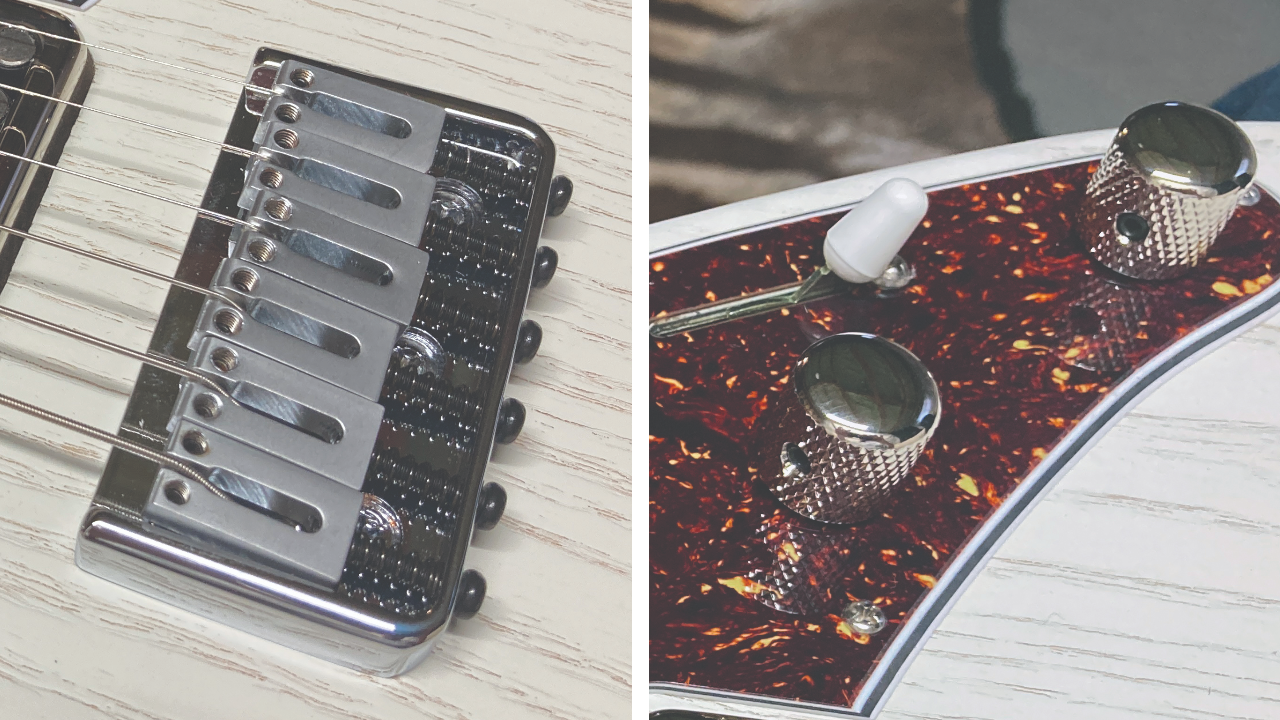
Tested through a 65amps London head and 2x12 cab, a custom tweed Deluxe-style 1x12 combo, and a Fractal FM9 modeler, the 2TV and TVL both acquitted themselves beautifully and quickly established their prowess as the products of another pro- grade boutique guitar maker.
In addition to easy playability, the Shorelines exhibit a tonal veracity. As the format probably implies, they take easily to a broad range of genres, excelling at everything from meaty twang to textural and atmospheric swirl and chimey indie rock. Even with heavier gain applied, each guitar remained clear and articulate, certainly leaning more toward Gretsch-meets-Fender than humbucker thick, but with plenty of body from all positions.
The Zoom’Trons, a relatively new model of pickup for TV Jones, were a fun surprise here, lending an alnico-pole clarity and shimmer that paired well with the 2TL’s swamp-ash body. The result seemed a slightly increased glassy-to-gritty ratio when compared to the alder TVL with steel-pole Classics.
The two-point vibrato on that guitar is smooth and efficient, with good return-to-pitch capabilities. It also contributes the slightly brighter, metallic edge of an S-inspired vibrato bridge, although the pickups on the 2TL again jump into the fray to help keep it all from being too spiky.
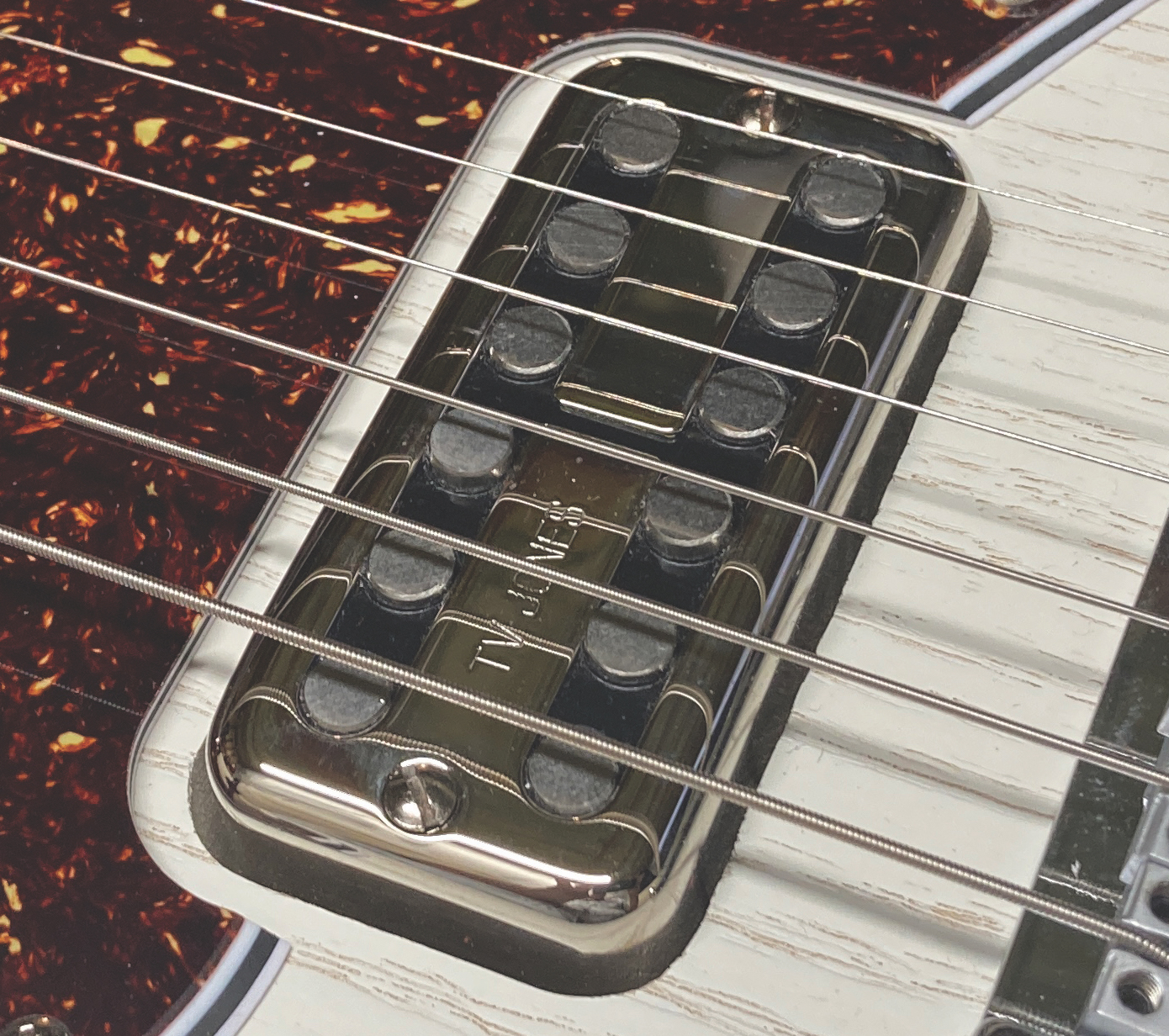
I’m not sure the lipstick pickup in the middle position of the TVL does much for me, but I’ve never found as much use for those Strat-inspired in-between settings as many other players have. It does its job though, and arguably provides as subtle a means of getting there as possible.
Plus, Graef and Swerdfeger have cleverly wired the five-way switch on this one to give us the neck-and-bridge combo in the third position, so we’re not missing out on that pleasure. As these two models demonstrate, ToneLounge makes cool guitars with a trick or two up their sleeves. I think we’ll see many more great models from this stable.
CONTACT ToneLounge
PRICES TVL, $3,800; 2TV, $3,200
Dave Hunter is a writer and consulting editor for Guitar Player magazine. His prolific output as author includes Fender 75 Years, The Guitar Amp Handbook, The British Amp Invasion, Ultimate Star Guitars, Guitar Effects Pedals, The Guitar Pickup Handbook, The Fender Telecaster and several other titles. Hunter is a former editor of The Guitar Magazine (UK), and a contributor to Vintage Guitar, Premier Guitar, The Connoisseur and other publications. A contributing essayist to the United States Library of Congress National Recording Preservation Board’s Permanent Archive, he lives in Kittery, ME, with his wife and their two children and fronts the bands A Different Engine and The Stereo Field.

